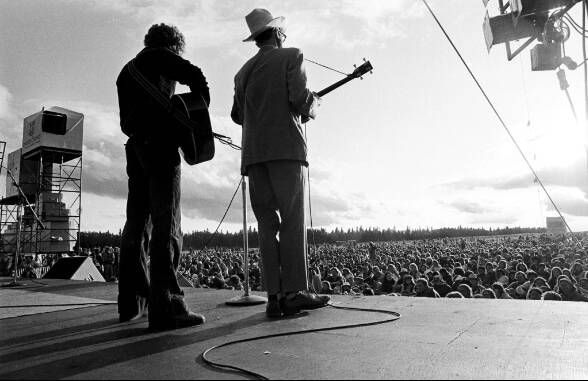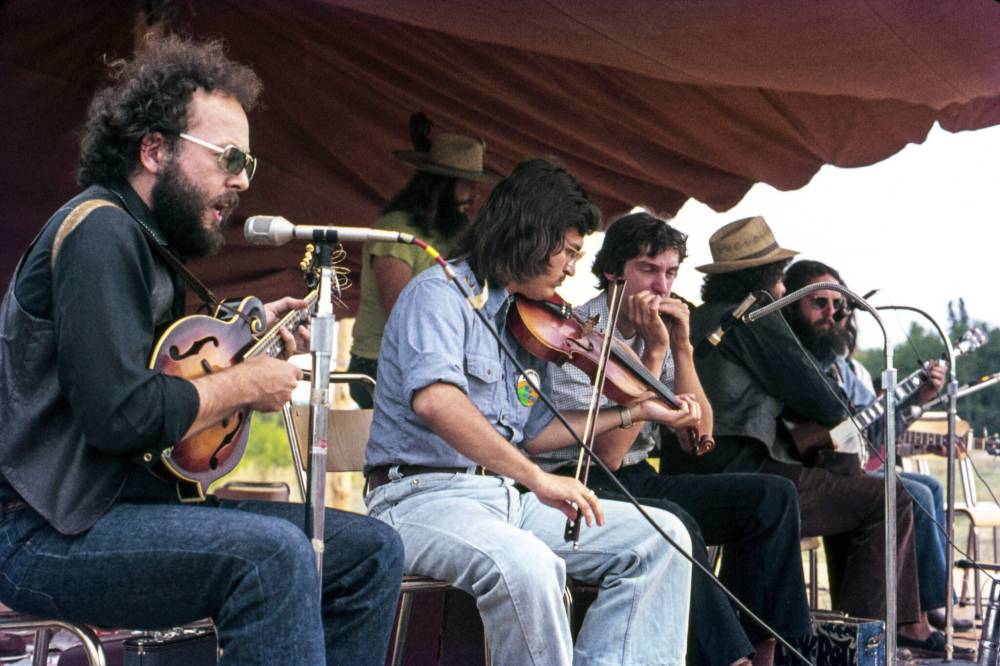Tribute to famous festival in denim, long hair, old footage
Advertisement
Read this article for free:
or
Already have an account? Log in here »
To continue reading, please subscribe:
Monthly Digital Subscription
$1 per week for 24 weeks*
- Enjoy unlimited reading on winnipegfreepress.com
- Read the E-Edition, our digital replica newspaper
- Access News Break, our award-winning app
- Play interactive puzzles
*Billed as $4.00 plus GST every four weeks. After 24 weeks, price increases to the regular rate of $19.00 plus GST every four weeks. Offer available to new and qualified returning subscribers only. Cancel any time.
Monthly Digital Subscription
$4.75/week*
- Enjoy unlimited reading on winnipegfreepress.com
- Read the E-Edition, our digital replica newspaper
- Access News Break, our award-winning app
- Play interactive puzzles
*Billed as $19 plus GST every four weeks. Cancel any time.
To continue reading, please subscribe:
Add Winnipeg Free Press access to your Brandon Sun subscription for only
$1 for the first 4 weeks*
*$1 will be added to your next bill. After your 4 weeks access is complete your rate will increase by $0.00 a X percent off the regular rate.
Read unlimited articles for free today:
or
Already have an account? Log in here »
From local filmmaker Kevin Nikkel and the late Dave Barber, Cinematheque’s longtime programmer, this new documentary is a suitably shaggy, grainy and low-key look at the early years of the Winnipeg Folk Festival.
Now one of the longest-running folk fests in North America, this dearly loved four-day weekend is a highlight of our town’s cultural calendar.
There’s a lot of information here, but mostly this doc catches a mood, a feel, immersing us in a totally 1970s scene of denim and long hair, mandolin players and barefoot dancers, tired toddlers and happy dogs.

SUPPLIED
The doc is a suitably shaggy look at the soon-to-be summer tradition.
Put together from Super 8 footage shot in 1975 for a Winnipeg Film Group project that was shelved because of technical issues, When We Became Folk Fest incorporates scenes of performances, workshops and festival crowds, mixing in sound recordings from the Folk Festival collection and audio overlay of later conversations with musicians, volunteers and staff.
Nikkel and Barber worked with sound designer Andy Rudolph and John Prentice, who was part of the original ’75 crew. Perhaps picking up on the co-operative ethos of its subject, the film’s opening credits also cite the contributions of “a lot of good folks.”
Nikkel has done evocative work engaging with archival material in films such as On the Trail of the Far Fur Country. While working within the limitations of this found footage — and the visuals can feel a little repetitive — he and Barber still manage to put a distinctive and contemporary spin on the material.
There isn’t a strong narrative line — it’s more about vibes — but the doc gently touches on a cluster of related ideas.
First off, there’s an indirect but still vivid portrait of the late Mitch Podolak, who founded the fest in 1974 along with Colin Gorrie and Ava Kobrinsky.
The film starts with a printed quotation from former Free Press writer Ted Allan, who calls Podolak “a transcontinental telephone screamer and cajoler … a strategist, romantic and catalyst for an event that has become a North American institution.”
From some footage of the man himself, as well as interviews with friends and colleagues, we get a sense of the tenacity and ingenuity needed to keep any grassroots not-for-profit arts organization going.
“First you tell the lie, then you have to make it happen,” says one commentator, describing Podolak’s idiosyncratic, audacious and seat-of-the-pants approach in those tricky early years.
The inaugural fest was a free three-day event at Birds Hill Park in 1974, made possible by the abundant funding around Winnipeg’s centennial celebrations.

BETSY THORSTEINSON PHOTO
The footage captured by the Winnipeg Film Group in 1975 suffered the then-fatal flaw of out-of-sync images and sound: today’s technology was able to save it.
A cranky Winnipeg Tribune columnist suggested the festival was fine as a one-off, but it would be “folly” to run it as an annual event. Fortunately, Podolak and his dedicated collaborators had other ideas.
While some outsiders wondered why the festival was located seemingly in the middle of nowhere — Podolak told American musicians who didn’t know where Winnipeg was to head to North Dakota and then keep going — it turned out there was an advantage in being far from the big centres.
With its homegrown scrappiness and strong community feel, our underdog music festival became influential, with festivals following in places such as Edmonton, Calgary and Vancouver, eventually forming a western circuit.
Folk music and money aren’t an easy fit, the documentary suggests. There was initially a lot of debt, and cash crunches might be solved by bottle drives or emergency pass-the-bucket appeals.
And once the festival started charging for admission, the organizers needed to be able to fence off the site. Volunteer Lorna Hiebert recalls trying to dissuade fence-jumpers with moral arguments. The following year they hired a wrestling team to patrol the perimeter.
There’s also plenty of talk about the bugs, the heat and the rain (cue extensive footage of soggy music fans wrapped in plastic tarps). As Podolak says, “Weather is weather.”
Other commentators suggest bad weather could even be a good thing: people found solidarity in surviving a big old Prairie thunderstorm together.
The sound system could be iffy in those early years, as a few people point out, but there was a real sense of intimacy and connection.
Stages were low, maybe a metre off the ground, with the audience starting a metre or two away. And maybe even more important than the performances were the workshops, the impromptu jamming and the casual conversations.

John Bachmann photo
Performances at the inaugural folk festival were intimate affairs.
There are questions about how to define folk music, how to promote it, how to convince funders it is a worthwhile artform.
We hear Indigenous music, Celtic music, bluegrass, Mississippi blues, protest and union songs. We see footage of Tom Jackson, Sam Chatmon, Ramblin’ Jack Elliott, Floyd Westerman, Cathy Fink and Duck Donald.
This isn’t really a performance film, though. Fundamentally, it’s a lovely and life-affirming tribute to a temporary town created for one weekend a year.
As Hiebert suggests, the Winnipeg Folk Festival is about “people looking for a beautiful world.” That makes this documentary just as necessary now as it was in 1975 — maybe even more so.
The 7 p.m screening tonight (Friday, July 13) features a Q&A with filmmakers Kevin Nikkel and John Prentice, moderated by John Einarson.
alison.gillmor@freepress.mb.ca

Studying at the University of Winnipeg and later Toronto’s York University, Alison Gillmor planned to become an art historian. She ended up catching the journalism bug when she started as visual arts reviewer at the Winnipeg Free Press in 1992.
Our newsroom depends on a growing audience of readers to power our journalism. If you are not a paid reader, please consider becoming a subscriber.
Our newsroom depends on its audience of readers to power our journalism. Thank you for your support.


